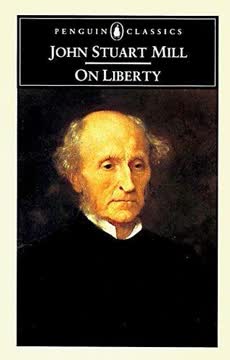Key Takeaways
1. Social Reality is Constructed Through Agreement
There are portions of the real world, objective facts in the world, that are only facts by human agreement.
Objective facts by agreement. Searle argues that much of what we consider real in our social lives—money, property, marriage, governments—exists only because we collectively agree that it does. These "institutional facts" are distinct from "brute facts," which exist independently of human opinion, like the chemical composition of water or the height of Mount Everest. This dependence on collective belief doesn't make social reality any less real or objective; it simply highlights its unique foundation.
Metaphysical burden. The complexity of social reality is often invisible, yet it shapes our daily interactions. Consider a simple act like ordering a beer in a cafe: it involves a vast, unseen network of property rights, governmental regulations, and cultural norms. We navigate this complex web effortlessly, often unaware of the intricate structure that underpins it.
Invisibility and analysis. The invisibility of social structures poses a challenge for analysis. Neither internal phenomenological descriptions nor external behaviorist accounts are sufficient. Searle advocates for a first-person intentionalistic vocabulary to reveal the elementary features of social ontology, later grounding this in the "Background" of nonconscious capacities.
2. Institutional Facts Require Collective Intentionality
Collective intentionality is a biologically primitive phenomenon that cannot be reduced to or eliminated in favor of something else.
"We" intentionality. Searle emphasizes that collective intentionality, the capacity to share beliefs, desires, and intentions, is fundamental to social facts. It's not merely the sum of individual intentions but a primitive phenomenon. Examples include a football team executing a play or two people pushing a car together.
Irreducible collectivity. Attempts to reduce collective intentionality to individual intentionality plus mutual beliefs fail to capture the sense of doing something together. The crucial element is a shared sense of purpose, where individual intentions are derived from the collective one. This "we-consciousness" is essential for understanding social facts.
Social vs. institutional facts. While all institutional facts are social facts, not all social facts are institutional. Hyenas hunting a lion is a social fact involving collective intentionality, but it doesn't require the complex institutional structures of money or government. Institutional facts are a special subclass that depend on human institutions.
3. Language is Constitutive of Institutional Reality
Language seems to be essential not only to represent these facts to ourselves; but in a way that we will have to explain, the linguistic forms in question are partly constitutive of the facts.
Words shape reality. Searle argues that language is not just a tool for describing social reality but is partly constitutive of it. Institutional facts like money, marriage, and property require language because the concepts themselves are embedded in linguistic frameworks. This is not to say that social facts in general require language, but that institutional facts do.
Language-dependent thoughts. The thoughts that are constitutive of institutional facts are language-dependent. Unlike the desire for a bone, which a dog can experience without language, the belief that something is money requires a linguistic system for representing and counting value. This is because the status function assigned to money cannot be fulfilled without collective agreement, which requires a shared system of symbols.
The X counts as Y. The move from X to Y in the creation of institutional facts is inherently linguistic, even when it doesn't appear to be. The Y term assigns a new status that the X term doesn't already possess, and this new status requires markers, because there isn't anything else there.
4. Constitutive Rules Form the Basis of Social Institutions
Institutional facts exist only within systems of constitutive rules.
Rules create possibilities. Searle distinguishes between regulative rules, which govern pre-existing activities (like driving on the right side of the road), and constitutive rules, which create the very possibility of certain activities (like the rules of chess). Institutional facts exist only within systems of constitutive rules. These rules often take the form "X counts as Y in context C."
The "counts as" locution. The "counts as" locution is crucial because it signifies the imposition of a status to which a function is attached through collective intentionality. This status and its accompanying function go beyond the sheer physical features of the object. The application of the constitutive rule introduces a new status that the object doesn't already have.
Normative status. When the imposition of a status function becomes general policy, the formula "X counts as Y in C" acquires a normative status, becoming a constitutive rule. This creates the possibility of abuses that couldn't exist without the rule, such as counterfeit money or malpractice.
5. Status Functions Assign New Powers
Collective intentionality assigns a new status to some phenomenon, where that status has an accompanying function that cannot be performed solely in virtue of the intrinsic physical features of the phenomenon in question.
Beyond physical features. The key element in creating institutional facts is the imposition of a collectively recognized status to which a function is attached. These "status functions" cannot be performed solely by virtue of physical structure. For example, paper currency functions as money not because of its material composition but because we collectively agree to accept it as such.
The Y term. The Y term in the formula "X counts as Y in C" must assign some new status that the entities named by the X term don't already have. This new status must be such that human agreement, acceptance, and other forms of collective intentionality are necessary and sufficient to create it.
Examples of status functions:
- A piece of paper (X) counts as money (Y) in the United States (C)
- A graduate of law school (X) counts as an attorney (Y) after passing the bar exam (C)
- Certain noises in a ceremony (X) count as getting married (Y) in a church (C)
6. Background Abilities Enable Institutional Functioning
Intentional states function only given a set of Background capacities that do not themselves consist in intentional phenomena.
Beyond conscious rules. Searle addresses the question of how constitutive rules can play a causal role in behavior when people are often unaware of them. He rejects the idea of unconscious rule-following, arguing instead for the concept of the "Background."
Non-intentional capacities. The Background is the set of non-intentional or pre-intentional capacities that enable intentional states to function. These capacities include abilities, dispositions, tendencies, and causal structures. They are not themselves intentional phenomena but are necessary for intentionality to operate.
Examples of Background functions:
- Enabling linguistic interpretation
- Enabling perceptual interpretation
- Structuring consciousness
- Providing narrative or dramatic shape to experiences
- Disposing us to certain behaviors
7. Realism is a Necessary Presupposition for Intelligibility
The world (or alternatively, reality or the universe) exists independently of our representations of it.
External realism defined. Searle defends "external realism" (ER), the view that the world exists independently of our representations of it. This means that even if we had never existed, most of the world would remain unaffected. ER is an ontological claim, not a semantic or epistemic one.
Distinguishing realism. It's important to distinguish realism from other views with which it's often confused. Realism is not a theory of truth, nor does it imply any particular theory of knowledge or language. It simply asserts the existence of a representation-independent reality.
Transcendental argument. Searle offers a "transcendental" argument for ER, showing that it's a necessary presupposition for intelligibility. When we attempt to communicate in a public language, we must presuppose a publicly accessible reality that exists independently of our representations.
8. Truth is Correspondence to Representation-Independent Facts
The statement will be true or false depending on whether things in the world really are the way the statement says they are.
Accuracy of representation. Searle defends the correspondence theory of truth, arguing that a statement is true if and only if it corresponds to the facts. This means that true statements accurately represent how things are in the world.
Disquotation and correspondence. The disquotational criterion of truth, which states that "s is true if and only if p," implies the correspondence theory. The right-hand side of a T sentence specifies a condition that is satisfied if and only if the sentence on the left-hand side is true, and this condition is what we call a "fact."
Facts and statements. Facts are not linguistic entities but rather conditions in the world that satisfy the truth conditions expressed by statements. The correspondence theory is not an attempt to define "true" without using other semantic notions but rather to explain the relationship between true statements and the world.
Last updated:
FAQ
What's The Construction of Social Reality about?
- Exploration of Social Constructs: The book examines how social realities, such as money, property, and institutions, are constructed through collective human agreement and language.
- Institutional vs. Brute Facts: Searle distinguishes between "institutional facts," which depend on human agreement, and "brute facts," which exist independently of human beliefs.
- Role of Language: Language is essential in constituting institutional facts, providing the symbolic means to represent and recognize these facts.
Why should I read The Construction of Social Reality by John Rogers Searle?
- Philosophical Insight: Offers a deep philosophical inquiry into the nature of social constructs, valuable for those interested in social sciences and philosophy.
- Understanding Institutions: Provides a framework for understanding how various institutions function and are maintained through collective intentionality.
- Relevance to Modern Society: Concepts discussed are highly relevant to contemporary discussions about social norms, governance, and the nature of reality itself.
What are the key takeaways of The Construction of Social Reality?
- Institutional Facts Defined: Created by collective agreement and require language for their existence, as seen in examples like money and marriage.
- Collective Intentionality: Social realities are maintained through collective intentionality, existing only as long as people recognize and accept them.
- Hierarchy of Status Functions: Status functions can be iterated and interrelated, creating complex social structures that govern behavior and expectations.
How does John Rogers Searle define institutional facts in The Construction of Social Reality?
- Definition of Institutional Facts: Facts that exist only within human institutions and require collective recognition to be valid.
- Example of Money: A piece of paper is considered money only because people collectively agree to treat it as such.
- Formula for Understanding: Uses the formula "X counts as Y in context C" to illustrate how institutional facts are established and recognized.
What is the difference between institutional facts and brute facts in The Construction of Social Reality?
- Dependence on Human Agreement: Institutional facts require human agreement for their existence, while brute facts exist independently of human beliefs.
- Examples Provided: Money and marriage are examples of institutional facts, whereas natural phenomena like mountains or chemical elements are considered brute facts.
- Language's Role: Language plays a crucial role in institutional facts, as it allows for the representation and recognition of these facts, unlike brute facts.
What role does language play in creating institutional facts according to The Construction of Social Reality?
- Language as Constitutive: Essential for the creation of institutional facts, providing the symbolic means to represent and recognize these facts.
- Symbolic Devices: Institutional facts cannot exist without some form of language or symbolic representation, as they rely on collective acceptance.
- Examples of Speech Acts: Performative utterances, such as "I pronounce you husband and wife," create institutional facts through language.
What is collective intentionality in The Construction of Social Reality?
- Definition of Collective Intentionality: Refers to the shared beliefs and intentions of a group that enable the construction of social realities.
- Importance in Social Facts: Crucial for the existence of institutional facts, as these facts depend on the collective recognition and acceptance of their status.
- Examples in Society: Includes voting, marriage ceremonies, and the functioning of governments, all relying on collective intentionality to maintain their status.
How does Searle illustrate the concept of status functions in The Construction of Social Reality?
- Definition of Status Functions: Roles or statuses assigned to objects or individuals that carry specific rights and responsibilities.
- Examples of Status Functions: Being a "husband" or "wife" imposes certain obligations and rights recognized by society.
- Imposition of Status: Often occurs through performative speech acts, such as marriage vows or legal declarations.
What is the significance of "collective intentionality" in The Construction of Social Reality?
- Foundation of Social Reality: Basis for creating institutional facts, reflecting shared beliefs and agreements among individuals in a society.
- Examples in Action: Illustrated with examples like voting and marriage, where individual actions gain meaning through collective recognition.
- Implications for Institutions: Helps explain how institutions function and persist over time, relying on shared acceptance.
What is the "background" concept in Searle's work?
- Non-Intentional Capacities: Refers to the set of non-intentional capacities and abilities that enable individuals to engage in intentional states and social practices.
- Facilitates Understanding: Plays a crucial role in interpreting language and social interactions, providing implicit knowledge necessary for understanding context.
- Connection to Institutional Facts: Essential for the creation and maintenance of institutional facts, underlying the collective acceptance required for these facts to exist.
How does Searle differentiate between brute facts and institutional facts?
- Brute Facts: Exist independently of human perception or agreement, such as the existence of a mountain or a physical object.
- Institutional Facts: Depend on human agreement and social constructs, like laws or social norms, requiring collective recognition to exist.
- Interdependence: Institutional facts are built upon brute facts but cannot exist without the social context provided by collective intentionality.
What are some criticisms of Searle's arguments in The Construction of Social Reality?
- Complexity of Institutional Facts: Critics argue that Searle's framework may oversimplify the complexities involved in how institutional facts are created and maintained.
- Challenges to Collective Intentionality: Some philosophers question the validity of collective intentionality as a basis for social reality, suggesting alternative explanations for social phenomena.
- Deflationary Views on Truth: The redundancy and deflationary theories of truth challenge Searle's correspondence theory, arguing that the notion of truth may not require the existence of facts as Searle describes them.
Review Summary
The Construction of Social Reality receives mostly positive reviews for its clear analysis of how social facts and institutions emerge from collective intentionality and language. Readers praise Searle's lucid writing and systematic approach to explaining complex philosophical concepts. Some criticize the book's repetitiveness and find fault with Searle's arguments on realism. Overall, reviewers appreciate the book's insights into the nature of social reality and its contributions to philosophy of language and mind, though a few find it challenging or disagree with specific points.
Similar Books
Download PDF
Download EPUB
.epub digital book format is ideal for reading ebooks on phones, tablets, and e-readers.


















